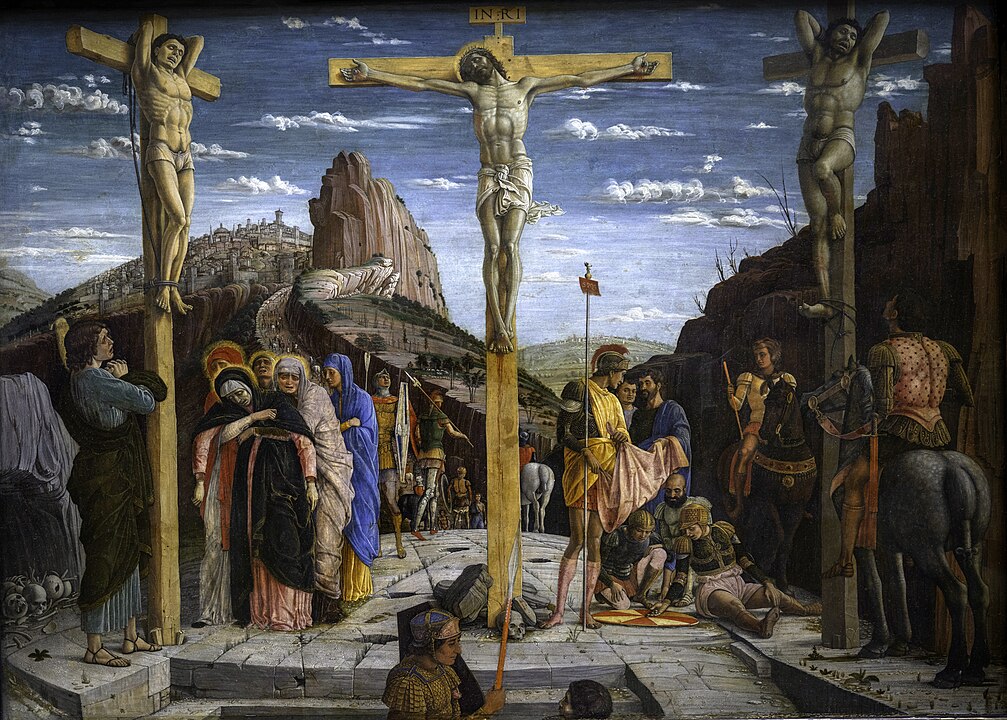
The Crosses Beside Christ: The Story of Dismas and Gestas
The scene at Golgotha, the place of the skull, is one of the most iconic and heart-wrenching moments in human history. Three crosses silhouetted against a bruised sky. On the center cross hangs Jesus of Nazareth, beaten, bloodied, and mocked as “King of the Jews.” To His right and His left hang two criminals, two men whose names are only hinted at in the canonical Gospels but remembered by tradition as Dismas and Gestas. Their stories, though brief in Scripture, add a profound layer to the crucifixion account. Who were these men? Why were they crucified? What role did they play in the final moments of Christ’s earthly life? And what became of them?
Golgotha: A Hill of Judgment and Redemption
The Gospel accounts of Matthew, Mark, Luke, and John all describe Jesus’ crucifixion alongside two others. Luke 23:33 simply says, “When they came to the place called the Skull, they crucified Him there, along with the criminals, one on His right, the other on His left.”
But in this brief reference lies an extraordinary contrast: two lives, two choices, two destinies.
Crucifixion was a Roman punishment reserved for the worst of the worst, traitors, rebels, and the most notorious criminals. It was meant not just to kill, but to shame and terrify. These two men, hung beside the Messiah, were part of that brutal system. Yet their presence beside Jesus is no accident. Even in His death, Jesus is flanked by the extremes of human response to grace, mockery on one side, repentance on the other.
Who Were Dismas and Gestas?
The Bible does not name the two thieves, but early Christian tradition does. The Gospel of Nicodemus, an apocryphal text written around the 4th century, names them as Dismas (on Jesus’ right) and Gestas (on His left).
Dismas, also known as the Good Thief or Penitent Thief, is remembered for defending Jesus from the taunts of his fellow criminal and asking to be remembered in Christ’s kingdom.
Gestas, on the other hand, is the Unrepentant Thief, who joins the crowd and soldiers in mocking Jesus.
These names, though not found in the canonical Gospels, were embraced in early Christian lore and have persisted through the centuries in art, literature, and liturgy.
Why Were They Crucified?
All four Gospels confirm that Jesus was crucified with criminals, but the nature of their crimes is somewhat vague. Matthew and Mark use the term lēstai, translated as “rebels” or “bandits.” Luke calls them kakourgoi, literally, “evildoers” or “wrongdoers.” The distinction may point to a deeper involvement in rebellion or insurrection.
The historian Josephus, writing in the first century, often used the term lēstai to describe violent revolutionaries or zealots who fought against Roman rule. It is possible that Dismas and Gestas were more than just petty thieves, they may have been involved in a larger anti-Roman resistance, much like Barabbas, who was released instead of Jesus and described as a murderer and insurrectionist.
Whether they were part of the Zealot movement or simply violent criminals, their actions were deemed severe enough by Roman authorities to warrant the most brutal form of execution.
The Crucifixion: A Wisdom of Two Responses
The Gospel of Luke gives the most detailed account of the exchange between Jesus and the two men crucified beside Him:
“One of the criminals who hung there hurled insults at Him: ‘Aren’t you the Messiah? Save yourself and us!’
But the other criminal rebuked him. ‘Don’t you fear God,’ he said, ‘since you are under the same sentence?
We are punished justly, for we are getting what our deeds deserve. But this man has done nothing wrong.’
Then he said, ‘Jesus, remember me when you come into your kingdom.’
Jesus answered him, ‘Truly I tell you, today you will be with me in paradise.’”
— Luke 23:39–43
In this moment, the fate of two men diverges forever. Gestas, unrepentant, joins the crowd in ridicule. Dismas, acknowledging his sin and Jesus’ innocence, asks for mercy.
His simple plea, “Remember me”, is not only an act of repentance, but of recognition. In Jesus, beaten and dying, Dismas sees a King.
And Jesus’ response is one of the most comforting promises in all of Scripture: “Today you will be with me in paradise.”
Did Both Thieves Mock Jesus?
This question requires nuance. Matthew 27:44 and Mark 15:32 state that both criminals mocked Jesus:
“In the same way the rebels who were crucified with him also heaped insults on him.” , Matthew 27:44
At first glance, this seems to contradict Luke’s account. However, it is likely that both men initially joined in the mockery, but at some point during the hours on the cross, Dismas experienced a transformation.
Crucifixion was a drawn-out process, often lasting hours. Within that span, Dismas may have had a profound change of heart, perhaps as he watched how Jesus suffered without cursing, how He forgave His enemies, and how He cried out in agony not for Himself but for others. Whatever the cause, something pierced the heart of Dismas, and he turned.
The Gospel writers had different theological emphases, and Luke often highlighted stories of mercy and repentance. His inclusion of the Good Thief is in line with that theme.
The Role of the Crowd and the Crucifiers
Jesus’ execution was orchestrated by a complex web of forces:
The Jewish Authorities, particularly the high priests and Pharisees, saw Jesus as a threat to their power and religious order. His claims to divinity and popularity among the people stirred deep resentment.
The Roman Governor, Pontius Pilate, ultimately authorized the crucifixion, though he famously washed his hands of the matter. Under pressure from the crowd and Jewish leaders, he released Barabbas and condemned Jesus.
The Roman Soldiers carried out the crucifixion itself. They mocked Jesus, dressed Him in a purple robe, placed a crown of thorns on His head, and cast lots for His clothing.
The crowd, fickle and furious, called for His death, many of whom had welcomed Him into Jerusalem just days earlier with palm branches and hosannas. By the time Jesus was nailed to the cross, nearly everyone had turned against Him.
In that moment, even the criminals beside Him, outcasts of society, felt superior enough to mock Him. And yet, Jesus, with nails driven through His hands and feet, found room in His heart to forgive: “Father, forgive them, for they know not what they do.”
Legacy of Dismas and Gestas
In Christian tradition, Dismas became a symbol of last-minute salvation. He is often considered the first saint, the first to enter paradise through Jesus’ death. His story offers hope that no soul is too far gone to be redeemed.
Churches have been named after him, and his feast day is celebrated on March 25 in the Roman Catholic Church, a date that also historically aligned with the traditional day of the crucifixion.
Gestas, on the other hand, represents the hardened heart, unwilling to see grace even when it is nailed beside him. His legacy is one of warning, a reminder that proximity to Jesus is not the same as surrender to Him.
What Their Story Teaches Us
The contrast between Dismas and Gestas is not just historical; it’s profoundly personal. Each represents a choice:
To acknowledge our guilt and cry out for mercy…
Or to cling to pride and die in bitterness.
Dismas reminds us that grace can be found at the very end, that no one is beyond forgiveness. Gestas reminds us that hearts can remain hard, even in the presence of the divine.
They both looked at the same man on the middle cross. One saw weakness. The other saw a Savior.
The Crossroads of Eternity
On that dark Friday outside the city walls, three men were nailed to crosses. All were condemned. All were suffering. But only one was innocent. Only one was the Son of God.
Jesus, in His final hours, extended salvation to a dying thief. Not because of his good deeds, he had none to offer. Not because of a long history of faith, there was no time for that. But simply because he believed.
The story of Dismas and Gestas is a profound part of the crucifixion narrative. It is a portrait of the human heart in confrontation with God’s grace, one heart broken and healed, the other hardened and lost.
As long as the story of the cross is told, so too will be the story of these two men who hung beside the Savior, caught in the greatest drama of love, justice, and mercy the world has ever known.




